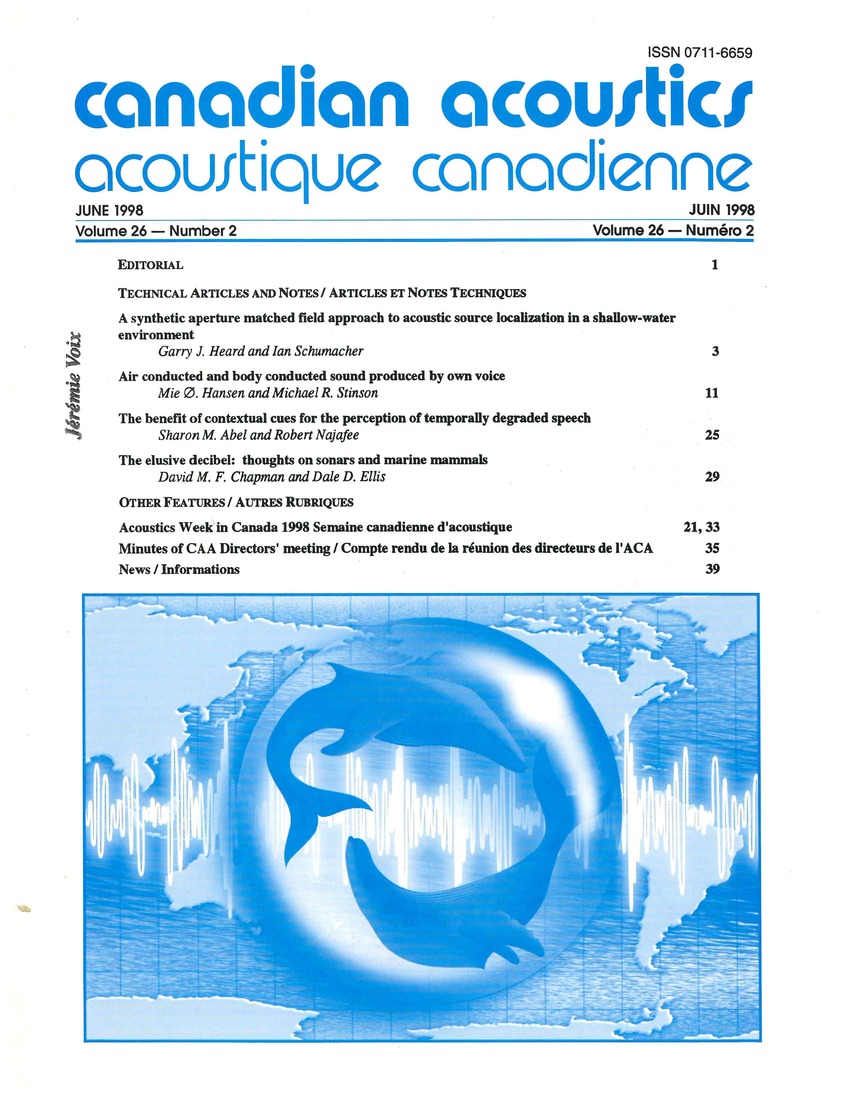Air conducted and body conducted sound produced by own voice
Mots-clés :
Mathematical models, Speech, Occlusion effectRésumé
Quand on parle, le son atteint nos oreilles à la fois à travers l’air, de notre bouche à l’oreille, et à travers notre corps comme vibrations. Le rapport entre le son se propageant dans l’air et le son se propageant dans le corps a été étudié dans un projet-pilote où le son se propageant par l’air fut éliminé en isolant l’oreille avec une grande boîte d’atténuation. Il fut découvert que ce rapport se trouve entre de -15 dB à -7 dB, au-dessous de 1 kHz, comparable aux évaluations théoriques. Ce travail fait partie d’une étude plus large sur l’effet d’occlusion et les résultats fournissent des données d’entrée importantes pour la modélisation du changement de la pression sonore entre un canal auditif ouvert et un qui est bloqué.Fichiers supplémentaires
Publié-e
Comment citer
Numéro
Rubrique
Licence
Author Licensing Addendum
This Licensing Addendum ("Addendum") is entered into between the undersigned Author(s) and Canadian Acoustics journal published by the Canadian Acoustical Association (hereinafter referred to as the "Publisher"). The Author(s) and the Publisher agree as follows:
-
Retained Rights: The Author(s) retain(s) the following rights:
- The right to reproduce, distribute, and publicly display the Work on the Author's personal website or the website of the Author's institution.
- The right to use the Work in the Author's teaching activities and presentations.
- The right to include the Work in a compilation for the Author's personal use, not for sale.
-
Grant of License: The Author(s) grant(s) to the Publisher a worldwide exclusive license to publish, reproduce, distribute, and display the Work in Canadian Acoustics and any other formats and media deemed appropriate by the Publisher.
-
Attribution: The Publisher agrees to include proper attribution to the Author(s) in all publications and reproductions of the Work.
-
No Conflict: This Addendum is intended to be in harmony with, and not in conflict with, the terms and conditions of the original agreement entered into between the Author(s) and the Publisher.
-
Copyright Clause: Copyright on articles is held by the Author(s). The corresponding Author has the right to grant on behalf of all Authors and does grant on behalf of all Authors, a worldwide exclusive license to the Publisher and its licensees in perpetuity, in all forms, formats, and media (whether known now or created in the future), including but not limited to the rights to publish, reproduce, distribute, display, store, translate, create adaptations, reprints, include within collections, and create summaries, extracts, and/or abstracts of the Contribution.


